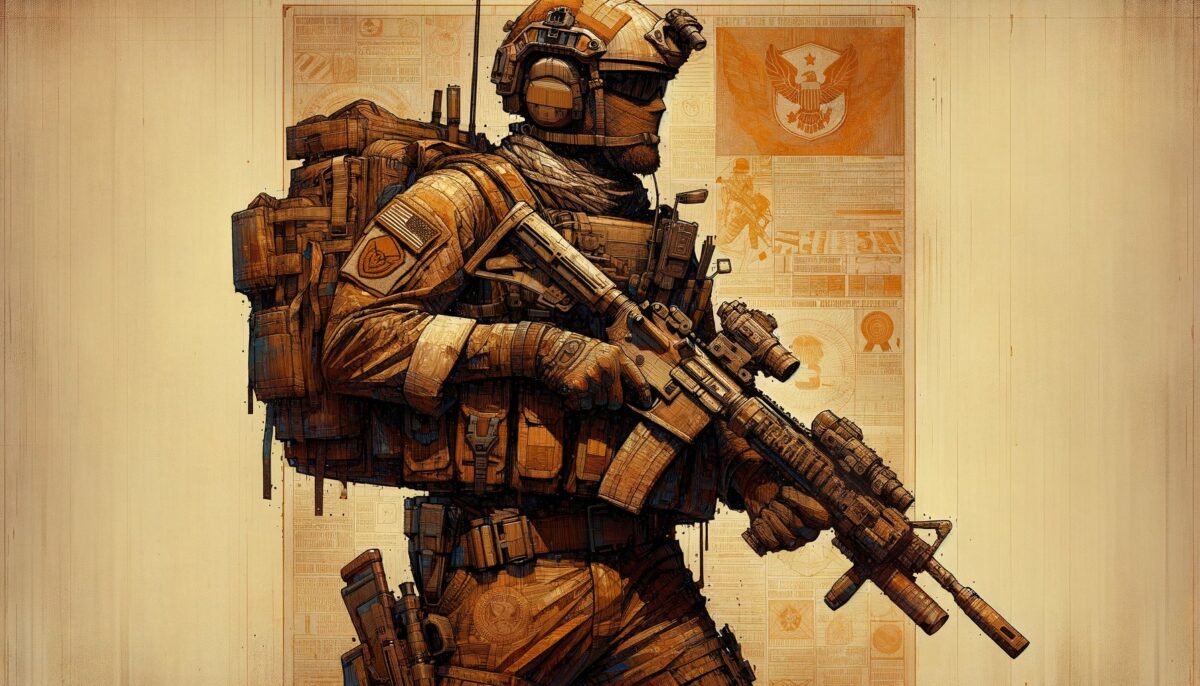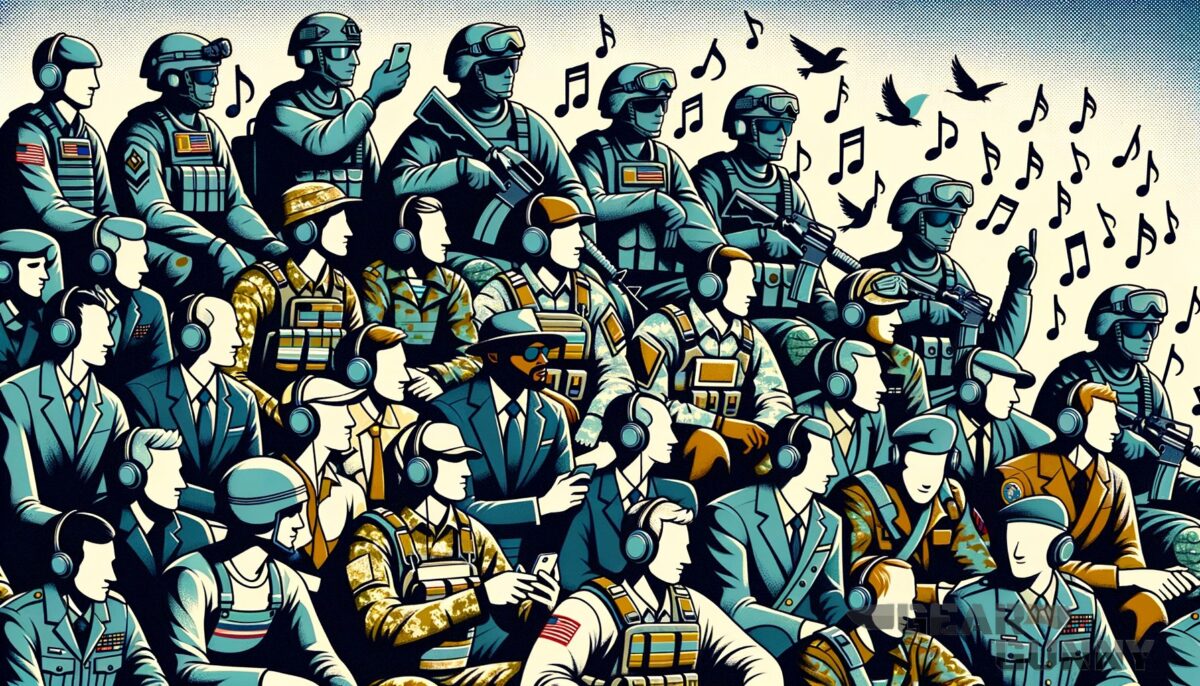Ever wondered how military leadership ranks up and what it means to be a commissioned officer? You’re not alone — this is crucial knowledge for anyone with an eye on military structure or aspirations of serving. By diving into the distinction of commissioned officers, you’ll understand the backbone of military command. Prepare to unravel the core of military leadership with insights on the significance of commissioned ranks, from lieutenants to generals.
Ready to step up your knowledge with some key tactical expertise? Strap in and let’s go.
Key takeaways
- Commissioned officers are the leaders who command the military.
- They require extensive training and education.
- Differences in Roles and responsibilities depend on branch and rank.
What is a commissioned officer in the military?
In the armed forces, commissioned officers are the top dogs. They hold a commission, which is a fancy term for an official document giving them the authority to command. They’re the planners, the decision-makers, and they lead their troops into the thick of things. When you think of a commissioned officer, picture someone who’s gone through rigorous training and education, typically through a military academy, ROTC program, or officer candidate school.

It’s not a walk in the park, officers are Molded to Lead.
Now, it’s not just about wearing shiny bars or stars on their uniforms. These officers must embody leadership, tactical know-how, and a deep understanding of the military’s ways. They’re responsible for the welfare and performance of their enlisted personnel — which includes Marines, soldiers, sailors, and airmen under their command. Think of them as the backbone of military operations, tasked with strategizing missions and making critical decisions in high-pressure situations.
Here’s the breakdown of their roles: * Strategic Leadership: They’re the brains of the operation, planning missions and leading troops. * Mentors and Advisors: Their wisdom guides younger enlisted members to shape up as effective warriors. * Morale Builders: It’s all about keeping spirits high, even when the going gets tough.
For a deeper understanding of the gear that supports these leaders on the ground, check out the best plate carriers to see what protects our officers in the field.
(Opinion)
Now, speaking as someone who’s not an expert in the nuances of military commissioning, this is my take. Officers are the heart of the armed forces, their guidance shaping military success. Without strong, competent officers, even the most well-trained troops can falter. From my perspective, it’s not just about strategy and combat; it’s about character.
An officer must be someone you’d follow into the fray, someone who can inspire courage and instill a sense of duty.
Moreover, I believe the level of commitment and sacrifice these men and women make is paramount. They’re not just committing to a job; they’re dedicating their lives to their country’s service, which deserves immense respect. Check out what is the USMC to understand the unique ethos and culture officers and enlisted Marines uphold.
5.11 Rush 24 Tactical Backpack

5.11 Rush 24 Tactical Backpack
Commissioned officer overview
Commissioned officers in the military are leaders with legal authority conferred upon them by a governmental appointment commission. They are the decision-making spine of the military, holding positions of high responsibility and importance.
- Training and Education: Officers get extensive training and typically have a college degree.
- Leadership Roles: They lead troops, plan missions, and are essential to military success.
For insights on gear commissioned officers might rely on, explore best tactical gloves.
“Commissioned officers are the decision-making spine of the military, holding positions of high responsibility. They embody leadership, tactical know-how, and a deep understanding of military’s ways.”
Commissioned officer ranks
The ranking system for officers is hierarchical and clearly defined. It acts as the spine providing structure to military leadership.

- Lower Ranking Officers: Lieutenants and captains, leading platoons and companies.
- Senior Officers: Majors, lieutenant colonels, and colonels, overseeing larger units.
- General Officers: Generals and admirals, responsible for broad strategic operations.
Understand their gear requirements by checking out best tactical belts.
Paths to becoming a commissioned officer
You can become an officer through several paths, each with its unique requirements and training programs. It’s important because it shapes the ethos and expertise of every leader.
- Service Academies: West Point, Annapolis, and the Air Force Academy.
- ROTC Programs: Combines university education with military training.
- OCS/OTS Programs: For college graduates seeking to serve as officers.
Learn more about one of these paths with what is the Army’s ROTC program.
Roles and responsibilities
Commissioned officers have diverse roles, including more than just leading troops into battle. They are also moral compasses and sources of inspiration for their units.
- Strategy and Tactics: Developing and implementing military strategies.
- Personnel Management: Ensuring the welfare and development of subordinates.
- Logistics and Administration: Overseeing supply chains and resource allocation.
Gear up on knowledge by reading about what is MOLLE webbing.
Differences between commissioned and non-commissioned officers
Understanding the differences between COs and NCOs is crucial, as it reflects the military’s organization and functioning.
- Authority and Leadership: COs have higher authority levels and command roles.
- Training and Education: COs typically require a higher education level.
Grab a tactical edge in understanding by checking out best tactical boots.
Summary of Commissioned Officers Ranks and Responsibilities
| Ranks | Education | Main Responsibilities |
|---|---|---|
| Lieutenants | Bachelor’s Degree | Leading platoons, initial commanding roles |
| Captains | Bachelor’s or Master’s Degree | Company leadership, medium-level tactical decision-making |
| Major | Advanced degrees or certifications | Battalion-level command, key staff roles overseeing logistics |
| Colonel | Advanced degrees and extensive experience | Brigade-level command, senior advisory positions |
| General/Admiral | Extensive military education and experience | Highest command levels, strategic decision-making for entire branches |
An overview of commissioned officer roles and responsibilities, from a junior lieutenant to a senior general.
More commissioned officer career tips
Making it as a commissioned officer isn’t just about hitting the books and passing exams. It’s also about cultivating the kind of character and skills that aren’t always covered in formal training. Here are some tips to help build a commendable officer’s portfolio:
- Seek Leadership Roles: Take every opportunity to lead, whether in training exercises or community service.
- Pursue More Education: Stay sharp with continued learning, courses, and certifications.
- Network: Connect with peers and superiors who can offer guidance and opportunities.
- Stay Fit: Physical fitness is essential for officers; stay in top condition with a consistent workout routine.
When considering which tactical gear will best suit your needs in the field, the best tactical belts are worth checking out.
Before you set your sights on becoming a commissioned officer, it’s important to know the do’s and don’ts that can make or break your military career. Here’s a data table with some key points to keep in mind:
| Do’s | Don’ts |
|---|---|
| Do maintain a high level of physical fitness | Don’t neglect your mental and emotional health |
| Do continue your military education and training | Don’t become complacent in your current position |
| Do build strong relationships with mentors and peers | Don’t underestimate the value of listening to your subordinates |
| Do practice your leadership and decision-making skills regularly | Don’t ignore the importance of teamwork and cooperation |
Advantages and disadvantages of pursuing a commissioned officer career
Choosing the path of a commissioned officer is a significant commitment that comes with its own set of pros and cons. It’s a career path that demands dedication but also offers substantial rewards.
Advantages
- Leadership Opportunities: One of the most significant benefits is the chance to lead and inspire others.
- Professional Development: Continuous learning and growth through various military programs and schooling.
- Increased Responsibility: Being an officer means playing a crucial role in decision-making and strategy.
- Higher Pay Scale: Commissioned officers enjoy a higher salary and more benefits compared to enlisted members.
For a closer look at specialized gear, consider the importance and function of what is a plate carrier in an officer’s equipment list.
Disadvantages
- High Stress: The job comes with immense pressure, especially during conflicts or crises.
- Long Hours and Commitment: Balancing personal life can be challenging due to the demanding nature of the role.
- Rigorous Training and Education: The path to becoming an officer requires intense education and training programs.
- Risk of Burnout: The combination of high expectations and heavy workload can lead to burnout.
If you are a visual learner, check out this video titled ‘Milsim Loadout – Beginner’
Frequently asked questions (FAQ)
How does one transition from an enlisted member to a commissioned officer?
Enlisted members can become commissioned officers through programs like Officer Candidate School (OCS) or by earning a degree and completing ROTC. The transition involves meeting specific education requirements and demonstrating the potential for leadership.
What are the day-to-day duties of a commissioned officer?
The daily tasks of a commissioned officer vary widely but generally involve planning missions, training and managing personnel, and ensuring operational readiness. They also spend a significant amount of time on administrative duties and in continuous professional development.
Is there a difference in the role of commissioned officers among the various military branches?
While the core leadership responsibilities of commissioned officers are similar across the branches, each branch has unique operational environments and missions, which can influence specific roles and tasks. For instance, an officer in the Navy might focus more on ship operations, while an Air Force officer could be involved in flight operations.
Final thoughts
In wrapping up, understanding the role of a commissioned officer in the military is pivotal to appreciating the structured hierarchy and the smooth operation of military forces. These leaders carry a weighty responsibility, shaping not only military tactics and outcomes but also the lives of the people they lead. Their journey is one of commitment, dedication, and continual self-improvement.
Have I missed anything on what it means to be a commissioned officer?Did I cover everything you wanted to know? Let me know in the comments section below — I read and reply to every comment.If you found this article helpful, share it with a friend, and check out my full blog for more tips and tricks on military and tactical insights. Thanks for reading, and stay sharp out there, devil dogs.















